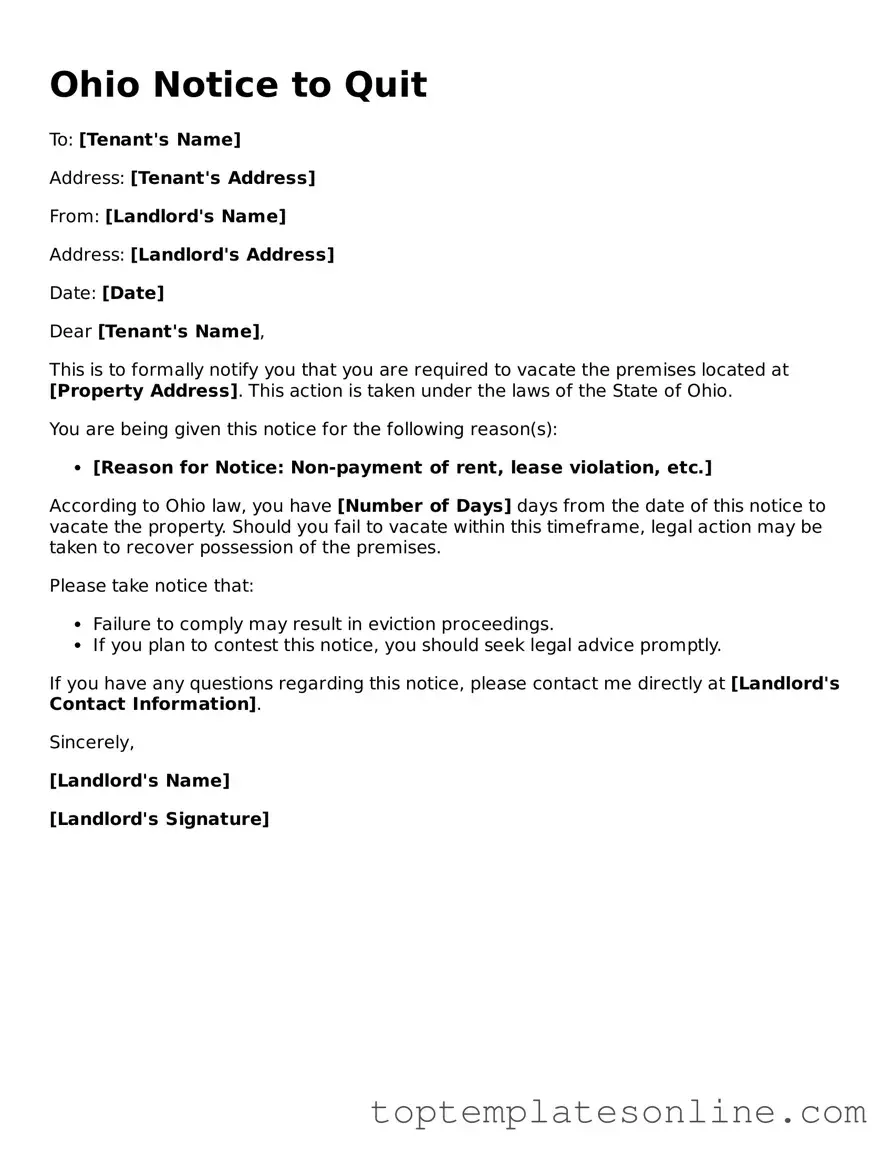Blank Notice to Quit Template for Ohio State
The Ohio Notice to Quit form is a legal document that a landlord uses to inform a tenant that they must vacate the rental property. This notice is typically issued when a tenant has violated the terms of their lease or has failed to pay rent. Understanding this form is essential for both landlords and tenants to navigate the eviction process effectively.
Customize Notice to Quit Here
